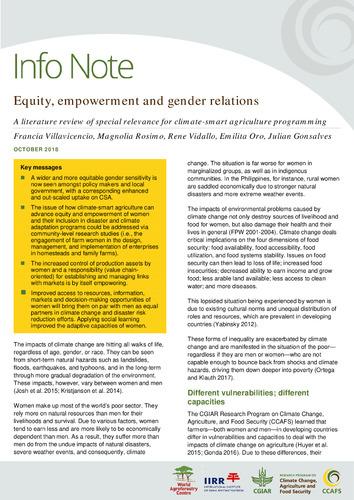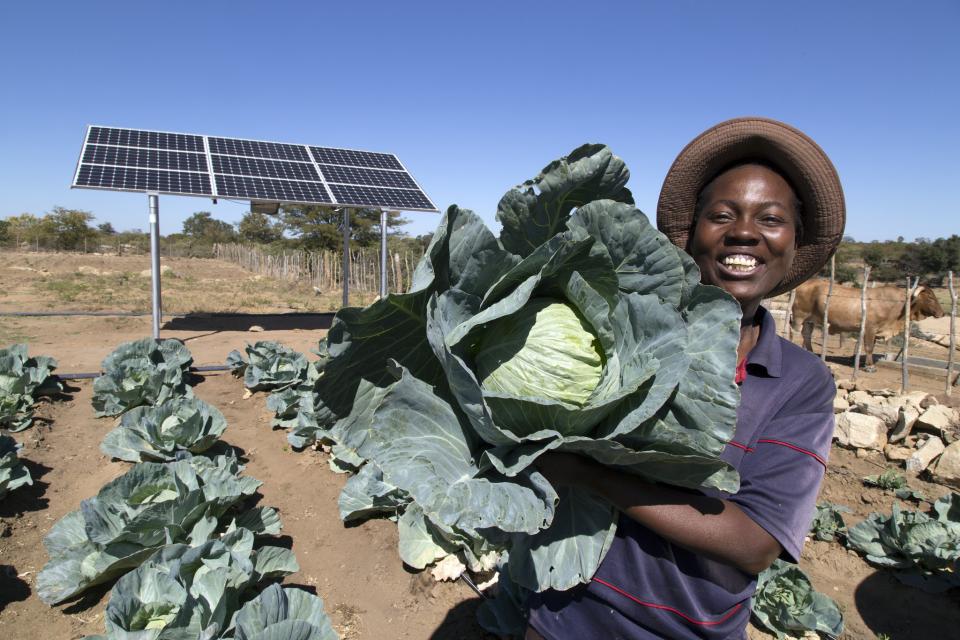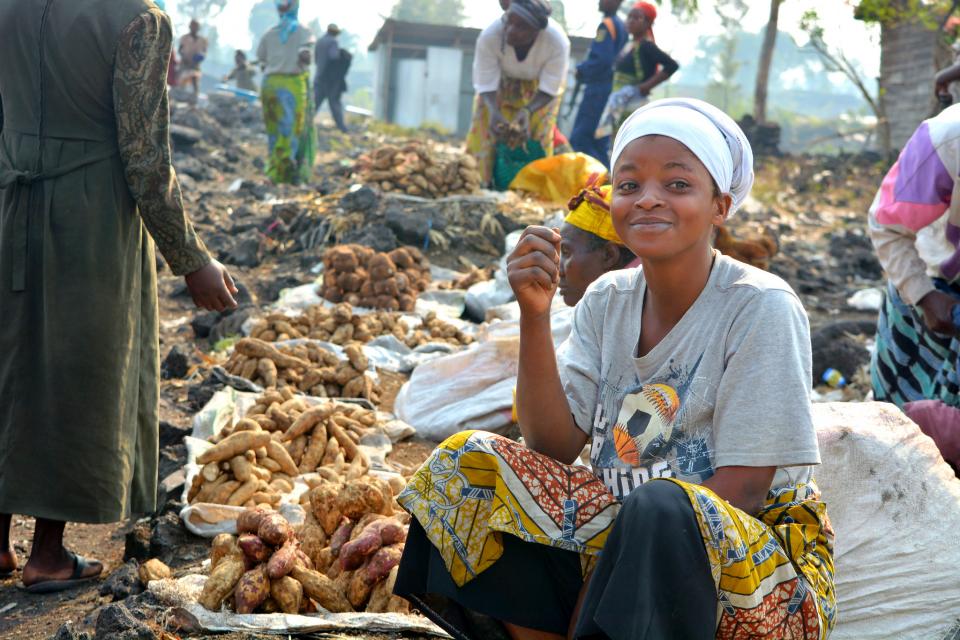Six practical steps to support women farmers to drive climate resilience
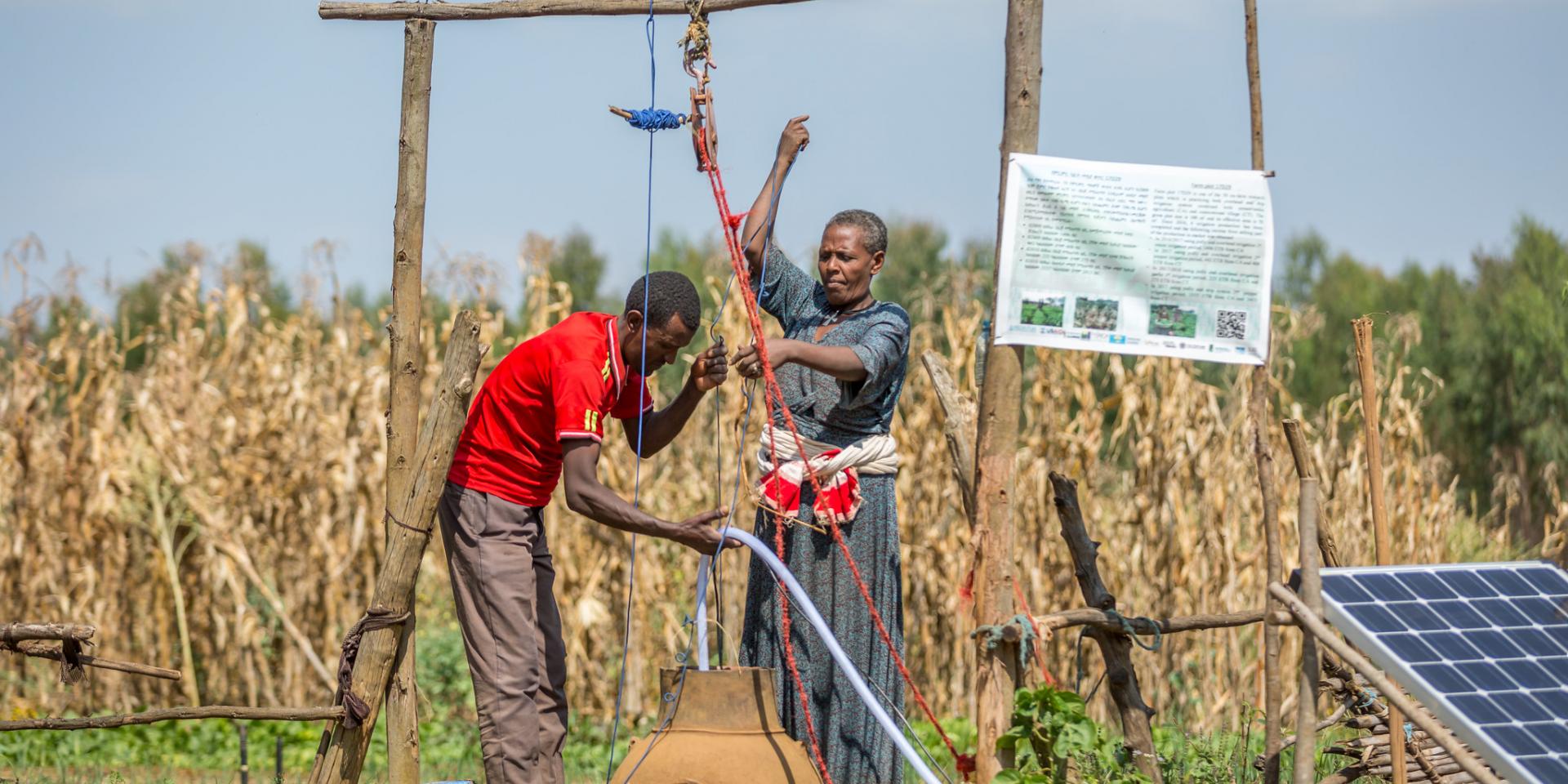 Photo: Mulugeta Ayene/WLE
Photo: Mulugeta Ayene/WLE
Women and girls are burdened with a disproportionate share of the negative impacts of climate change, but they can also play key roles in climate change adaptation if solutions are designed to work for them.
Women and men are affected by climate change impacts in different ways and have different opportunities and abilities to respond. Climate change adaptation and mitigation actions, policies and investments must take such differences into account to be successful. A climate change solution that does not work for women is not a climate change solution.
In advance of COP27, we have identified six practical steps, based on past research from CGIAR and beyond, that governments, development partners and private sector investors must take to support women farmers to respond to climate change and drive resilience for everyone:
1) Target private and public climate investments toward women who need it most
Climate finance, both public and private investments, must be directed toward the worst impacted women, and men, in the most affected regions. By identifying climate–agriculture–gender inequality hotspots—where climate hazards converge with large concentrations of women participating in food systems and significant structural gender inequalities—it is possible to pinpoint where to invest scarce resources to benefit most-at-risk populations, including women. In addition, channelling climate finance to promote adoption and mitigation efforts has been shown to foster gender equality and women’s empowerment and has led to climate-resilient development.
2) Make productive resources and labor-saving technologies available to women
Climate change impacts may increase women’s workload but promoting agricultural technologies and practices for climate adaptation that reduce their workloads can increase production, reduce negative impacts on health and allow women more time for other activities, such as education or businesses that can increase their resilience. For example, in Nepal, women farmers’ use of climate-smart technologies such as direct-seeded rice, green manuring and laser land leveling not only improved their productivity and incomes, but also showed potential to reduce their drudgery. Addressing gendered constraints that hamper women from accessing basic agricultural technologies can help boost their adaptive capacity. Likewise, using participatory approaches to develop and adapt climate-smart agriculture tools and technologies to meet women’s needs is essential.

Solar powered pump for irrigating home gardens being set up at Amhara region in Ethiopia (Photo by Mulugeta Ayene/WLE)
3) Design climate information services to reach and benefit women
Women need information if they are to cope with and manage climate risk and variability, but often have different options for accessing information than men. A case study from Ghana shows that women have less access to climate information via mobile phones compared to men, and that even when women do receive climate information, other resource constraints limit their ability to apply climate information to farming practices. Therefore, designing climate information services to take women’s situation and context into consideration is essential to increase women’s knowledge and adoption of climate-smart practices to increase their adaptive capacity. Successful strategies for reaching women include using intermediary organizations as conduits for communication and using a combination of channels like radio, TV and mobile phones.
4) Support women’s collective action for increased resilience
Working with women’s groups and collective action can be effective in identifying and deliver capacity-building activities tailored to women’s needs and constraints, and these groups can serve as platforms for women to exercise agency in implementing climate-adaptation strategies. Social networks and groups are especially important to access information, resources and economic opportunities needed to respond to climate change. For example, in India, CGIAR has worked with women-led organizations to build their capacity to use climate-smart farming technologies and practices and to access climate information services. As a result, women farmers became aware of and implemented new practices and they expanded their information networks, regularly using advisories on weather, markets, crop cultivation and technologies.
5) Promote women’s leadership and participation in decision-making at all levels
Improving women’s access to decision-making opportunities will make them equal partners of men in climate change and disaster-risk-reduction efforts. For example, households in Bangladesh, where women have equal participation in decision-making, are more likely to grow a greater range of crops, a key strategy for minimizing the risk that climate change poses to food security and nutrition. Making sure that women are equitably involved in decision-making can lead to greater resilience to climate change among smallholder households, communities and economies.
6) Collect gender-disaggregated data
While a lot of data on climate change impacts and policies are being collected by governments, often with support from development funders, more gender-disaggregated data is needed to better understand the gender-differentiated impacts of climate change and to implement gender-responsive measures. A case study on gender integration in climate change and agricultural policies in Nepal has identified collecting gender-disaggregated data on climate change impact, participation of men and women in agriculture, climate change adaptation activities, and access to goods and services as a key priority to increase women farmers’ access to critical agricultural inputs. Making concerted efforts to ensure that data is gender disaggregated from the start can help governments, funders and others to assess whether climate solutions, investments and policies are paying off and to track progress toward global goals on gender equality and climate.
References
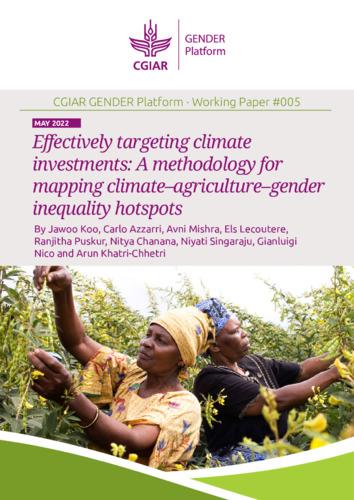
Effectively targeting climate investments: A methodology for mapping climate–agriculture–gender inequality hotspots. CGIAR GENDER Platform working paper 005.
From vulnerability to agency in climate adaptation and mitigation
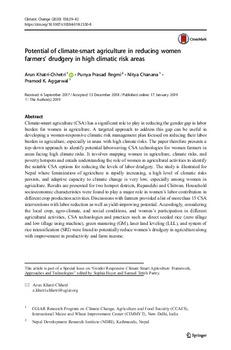
Potential of climate-smart agriculture in reducing women farmers’ drudgery in high climatic risk areas
Gender and climate risk management: evidence of climate information use in Ghana
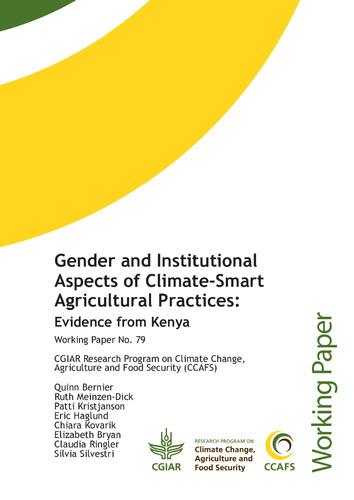
Gender and Institutional Aspects of Climate-Smart Agricultural Practices: Evidence from Kenya

Gender-responsive rural climate services: a review of the literature
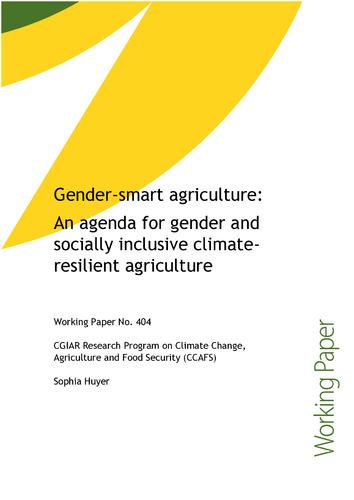
Gender-smart agriculture: An agenda for gender and socially inclusive climate-resilient agriculture
